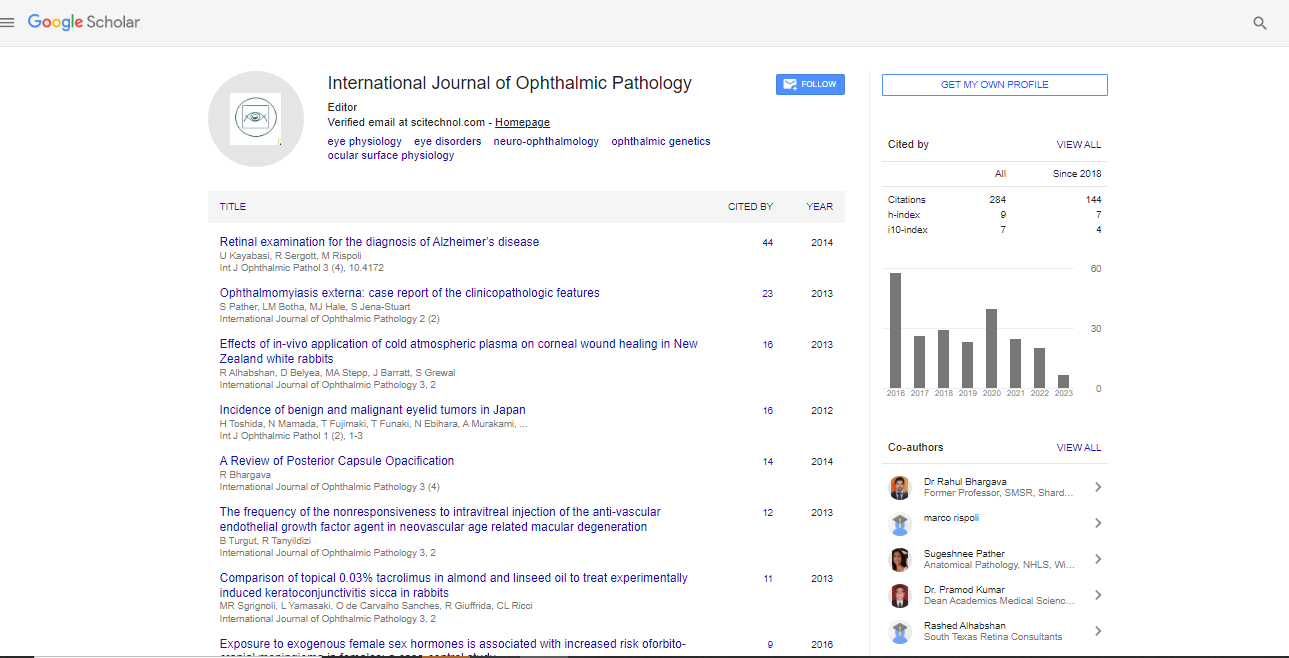Visible light OCT-based quantitative imaging of lipofuscin in the retinal pigment epithelium
Shuliang Jiao
Florida International University, USA
: Int J Ophthalmic Pathol
Abstract
Lipofuscin, a byproduct of the vision cycle of photoreceptors, is the major source of the fundus auto-fluorescence (FAF) in the Retinal Pigment Epithelium (RPE). Lipofuscin accumulates with aging and in certain pathological disorders and is thus a biomarker for degenerative retinal diseases. Therefore, quantification of lipofuscin is important in the diagnosis, progression monitoring, and treatment evaluation. Lipofuscin quantification is challenging because light is attenuated by the media anterior to the RPE which is subject to inter-individual and intra-individual differences. Further, various illumination power and detection sensitivity of different imaging systems can also affect the readings of the detected FAF. We developed a technology to provide simultaneous VIS-OCT and AF of the retina and a reference standard target at the intermediate retinal imaging plane with a single broadband visible light source. Since both OCT and AF images are generated from the same group of photons the OCT probe light experiences attenuation by the same ocular layers. The technology is able to eliminate the varying pre-RPE attenuation factor in AF imaging using the simultaneously acquired VIS-OCT image. To quantitatively bridge the OCT and AF detection systems thus eliminate the effects of illumination power and detector sensitivity, a standard reference target with known reflectivity and fluorescence efficiency was implemented into the system. Using the standard reference, similar to the one used by Delori AF and reflectance signals are normalized to a known reference value that are independent from the exposure power and detection gain. The system was calibrated and tested in vivo.
Biography
Shuliang Jiao received his Ph.D from the department of Biomedical Engineering of Texas A&M University in 2003. He joined the faculty of Bascom Palmer Eye Institute of University of Miami as an assistant professor after graduation. He is currently a professor in the Department of Biomedical Engineering, Florida International University. His research interest is mainly focused on the development of innovative technologies for imaging and treatment of eye diseases. His current research includes the technological development and application of Optical Photoacoustic Microscopy, Optical Coherence Tomography, and Multimodal Functional Imaging for the early diagnosis of age related macular degeneration, diabetic retinopathy, and glaucoma.
E-mail: shjiao@fiu.edu
 Spanish
Spanish  Chinese
Chinese  Russian
Russian  German
German  French
French  Japanese
Japanese  Portuguese
Portuguese  Hindi
Hindi 